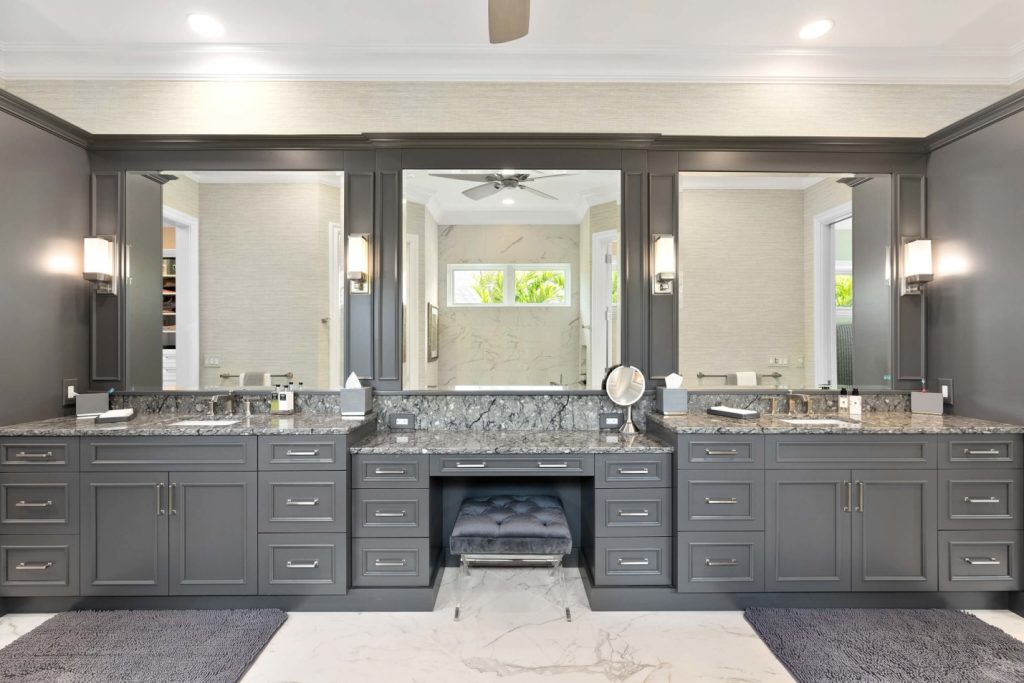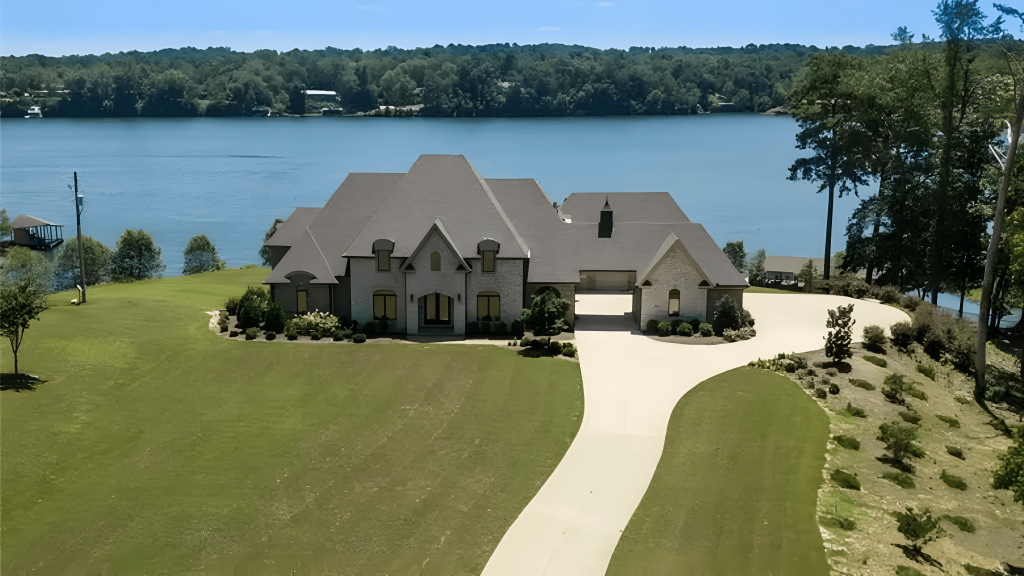A bathroom vanity is oftentimes the centerpiece of any bathroom and it serves as both a practical piece of furniture and style statement. There are many styles of this bathroom furniture made with different materials which makes it pertinent for you to pay careful attention when choosing one for your space.
Whether your project is a new construction or a home improvement, there are many options to choose from. These many options do not make it any easier for homeowners to pick the right bathroom vanity for their wash or powder room. That is why this article is put together to serve as a guide for making an informed decision. So, stay with us as we explore basics such as materials, styles and designs of this bathroom furniture and how to make the right choice.
What Is a Bathroom Vanity?
This is a piece of furniture that consists of one or two wash basins in the middle or by the side of a countertop and shelves or cabinets that houses plumbing fixtures and also provide storage. This furniture provides a space for people to groom themselves (most facials, dental and skincare) which is why it is designed to be functional in addition to its aesthetic appeal.
Vanities are made of different materials ad come in different shapes and sizes and these are designed to fit different tastes and layouts. There are different types of vanities, and they are discussed below:
Types of Bathroom Vanities
The following are the different types:
- Freestanding – These are the most popular types and usually look like a chest of drawers or cabinets. It usually comes with a solid base or legs and is placed directly on the floor. They are ideal for bathrooms that require additional storage.
- Wall-Mounted or Floating – These are modern sleek designs that are mounted directly to the wall which leaves ample space beneath it. This design makes a space look lagers and makes for easier cleaning. But sadly, they do not enough as much storage space as No.1.
- Corner – This is ideal for powder rooms or small bathrooms are they are fitted into a corner to maximize space. They usually come with smaller sinks and limited storage space.
- Vessel Sink – These feature sinks that are designed like bowls placed on top of the countertop. They are usually eye-catching and often found in bathrooms with advanced artistic designs or contemporary spaces.
- Double Vanity– These come with two sinks and are ideal for shared washrooms as they give each occupant personal space and also have enough storage space.
You can visit this site: https://blogs.winona.edu/ for tips on how to safely share a bathroom.
Materials Used in Making Bathroom Vanities
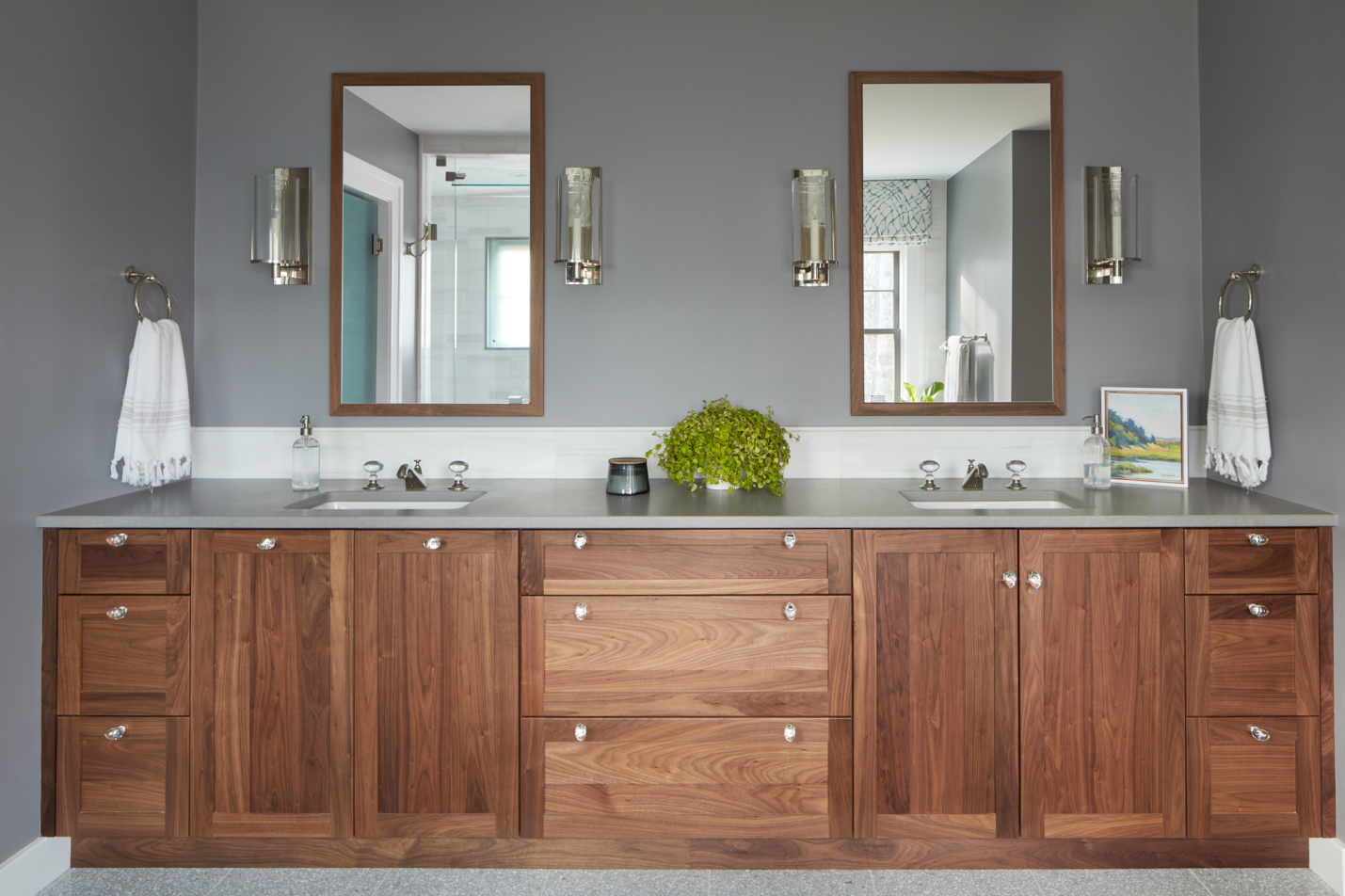
There are different materials used in making this bathroom piece and it determines its longevity and style. Talking of materials, we have different materials for the countertop and for the cabinet. The following are some of the most popular materials: –
Countertop Materials
- Marble – This is classic and luxurious but needs frequent and consistent sealing and maintenance.
- Granite – Known to be quite sturdy, it is natural but requires sealing.
- Quartz – As far as durability is concerned, quarts excels. It is also not porous and is available in many patterns and colors.
- Ceramic/Porcelain – These are pocket-friendly and easy to clean and are popularly used for countertops with integrated sinks.
Cabinet Materials
- Plywood – Plywood is water and moisture-resistant and quite strong and can be used in medium or high-profile vanities.
- Solid Wood – This is premium quality and lasts for long but can be affected by humidity if it is not sealed properly.
- Medium Density Fiberboard (MDF) – MDF is one of the most cost-effective materials and it is very smooth but does not last long in humid regions.
- Particleboard – This is quite affordable but easily gets damage with exposure to water over time.
Knowing that vanities often come in contact with water/moisture, it is important to always consider the volume of water it will be exposed to and the human traffic in the bathroom before choosing the material to use for the cabinet especially.
Tips for Choosing a Bathroom Vanity
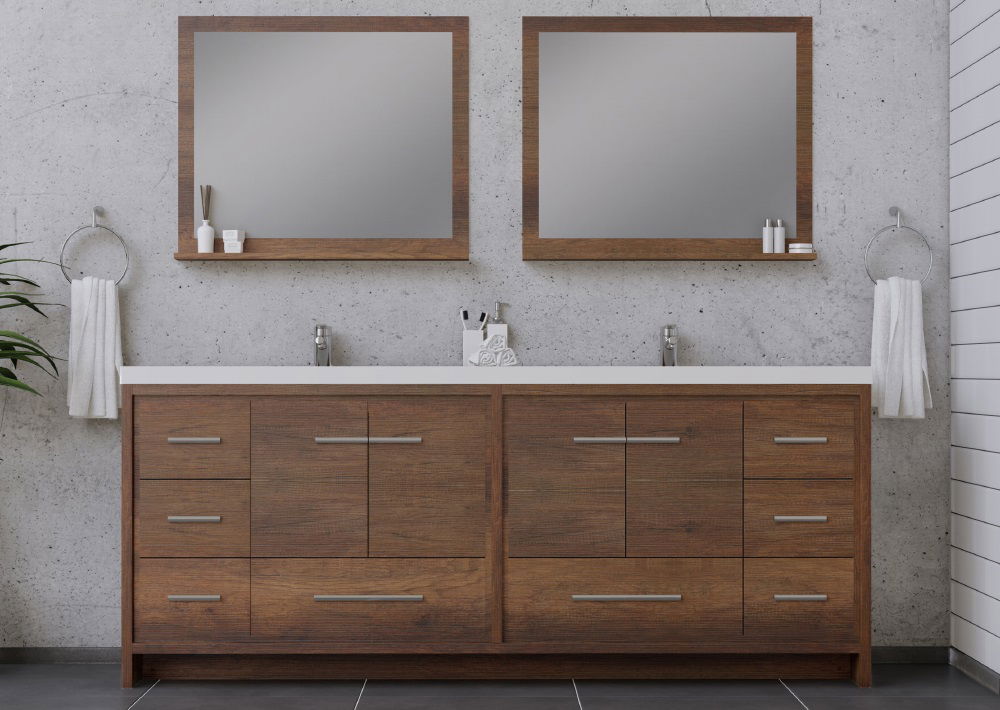
There are a number of factors involved in choosing a bathroom vanity and these factors will determine whether you made the right choice or not. The following tips will help you choose right: –
Get the Right Size
This is a very critical factor because if the vanity is too big it will take up the whole space and cramp it while a smaller size may not provide adequate counter space or storage. So think of the following: –
- Width
- Depth
- Height
Measure these dimensions carefully and accurately bearing in mind how the door swings, where the plumbing fixture will be placed and traffic flow.
Consider Storage and Organization
While a beautiful vanity elevates the visual appeal of a bathroom, the major purpose of this furniture is functionality. So, you need to consider a design that will help you with storage and organization in the space.
So, the following are design components to consider: –
- Drawers vs. Cabinets – Think of which one will serve you better; drawers are ideal for little items such as razors, cosmetics or hair grooming tools. Cabinets on the other hand provide space for bulkier and longer items such as towels and cleaning supplies.
- Open Shelves – This adds a beautiful touch and provides space for décor, baskets or rolled towels.
- Pull-out Organizers – There are some vanities that have built-in organizers that maximize that space under the sink.
All the above designs depend on who will use the bathroom most which also determines what will be stored in the space; so, consider that too!
Other factors to consider include: –
- Aesthetics and style
- Plumbing fixtures and installations
- Pairing of lighting and mirrors
- Durability
- Budget
Click here for some inspiration for your bathroom remodeling.
Conclusion
Bathroom vanities are not just sinks, countertops and cabinets; they add to the aesthetic appeal of a bathroom and enhance its functionality. We have shared information that we believe will go a long way in helping you pick the right one for your space. Bear them in mind so that you can get value for your money.
A bathroom vanity is oftentimes the centerpiece of any bathroom and it serves as both a practical piece of furniture and style statement. There are many styles of this bathroom furniture made with different materials which makes it pertinent for you to pay careful attention when choosing one for your space.
Whether your project is a new construction or a home improvement, there are many options to choose from. These many options do not make it any easier for homeowners to pick the right bathroom vanity for their wash or powder room. That is why this article is put together to serve as a guide for making an informed decision. So, stay with us as we explore basics such as materials, styles and designs of this bathroom furniture and how to make the right choice.
What Is a Bathroom Vanity?
This is a piece of furniture that consists of one or two wash basins in the middle or by the side of a countertop and shelves or cabinets that houses plumbing fixtures and also provide storage. This furniture provides a space for people to groom themselves (most facials, dental and skincare) which is why it is designed to be functional in addition to its aesthetic appeal.
Vanities are made of different materials ad come in different shapes and sizes and these are designed to fit different tastes and layouts. There are different types of vanities, and they are discussed below:
Types of Bathroom Vanities
The following are the different types:
- Freestanding – These are the most popular types and usually look like a chest of drawers or cabinets. It usually comes with a solid base or legs and is placed directly on the floor. They are ideal for bathrooms that require additional storage.
- Wall-Mounted or Floating – These are modern sleek designs that are mounted directly to the wall which leaves ample space beneath it. This design makes a space look lagers and makes for easier cleaning. But sadly, they do not enough as much storage space as No.1.
- Corner – This is ideal for powder rooms or small bathrooms are they are fitted into a corner to maximize space. They usually come with smaller sinks and limited storage space.
- Vessel Sink – These feature sinks that are designed like bowls placed on top of the countertop. They are usually eye-catching and often found in bathrooms with advanced artistic designs or contemporary spaces.
- Double Vanity– These come with two sinks and are ideal for shared washrooms as they give each occupant personal space and also have enough storage space.
You can visit this site: https://blogs.winona.edu/ for tips on how to safely share a bathroom.
Materials Used in Making Bathroom Vanities

There are different materials used in making this bathroom piece and it determines its longevity and style. Talking of materials, we have different materials for the countertop and for the cabinet. The following are some of the most popular materials: –
Countertop Materials
- Marble – This is classic and luxurious but needs frequent and consistent sealing and maintenance.
- Granite – Known to be quite sturdy, it is natural but requires sealing.
- Quartz – As far as durability is concerned, quarts excels. It is also not porous and is available in many patterns and colors.
- Ceramic/Porcelain – These are pocket-friendly and easy to clean and are popularly used for countertops with integrated sinks.
Cabinet Materials
- Plywood – Plywood is water and moisture-resistant and quite strong and can be used in medium or high-profile vanities.
- Solid Wood – This is premium quality and lasts for long but can be affected by humidity if it is not sealed properly.
- Medium Density Fiberboard (MDF) – MDF is one of the most cost-effective materials and it is very smooth but does not last long in humid regions.
- Particleboard – This is quite affordable but easily gets damage with exposure to water over time.
Knowing that vanities often come in contact with water/moisture, it is important to always consider the volume of water it will be exposed to and the human traffic in the bathroom before choosing the material to use for the cabinet especially.
Tips for Choosing a Bathroom Vanity
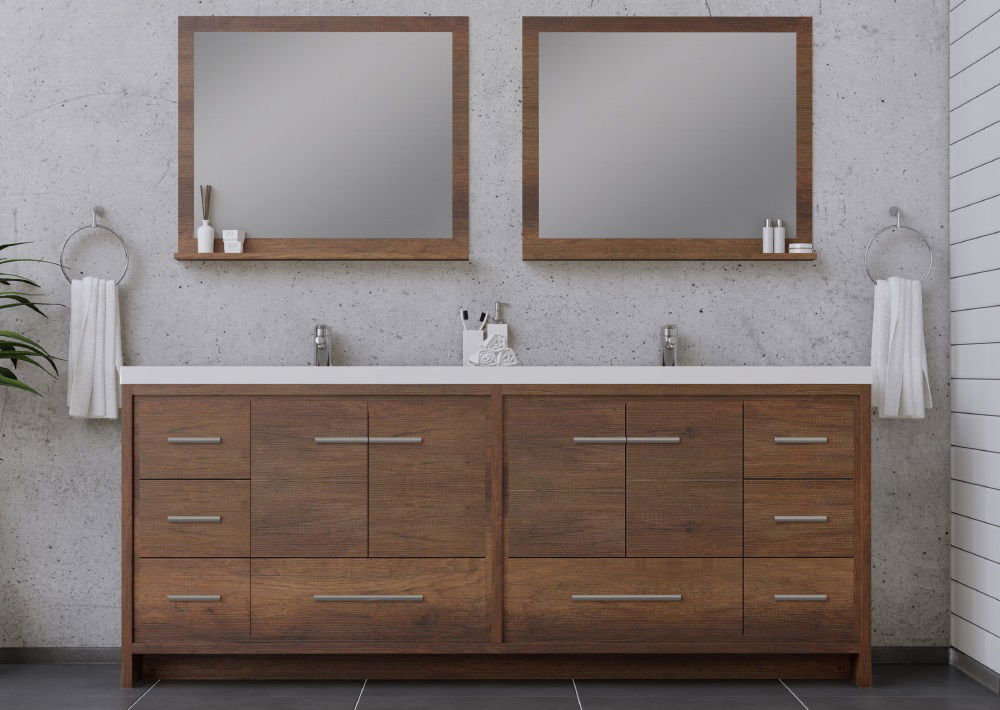
There are a number of factors involved in choosing a bathroom vanity and these factors will determine whether you made the right choice or not. The following tips will help you choose right: –
Get the Right Size
This is a very critical factor because if the vanity is too big it will take up the whole space and cramp it while a smaller size may not provide adequate counter space or storage. So think of the following: –
- Width
- Depth
- Height
Measure these dimensions carefully and accurately bearing in mind how the door swings, where the plumbing fixture will be placed and traffic flow.
Consider Storage and Organization
While a beautiful vanity elevates the visual appeal of a bathroom, the major purpose of this furniture is functionality. So, you need to consider a design that will help you with storage and organization in the space.
So, the following are design components to consider: –
- Drawers vs. Cabinets – Think of which one will serve you better; drawers are ideal for little items such as razors, cosmetics or hair grooming tools. Cabinets on the other hand provide space for bulkier and longer items such as towels and cleaning supplies.
- Open Shelves – This adds a beautiful touch and provides space for décor, baskets or rolled towels.
- Pull-out Organizers – There are some vanities that have built-in organizers that maximize that space under the sink.
All the above designs depend on who will use the bathroom most which also determines what will be stored in the space; so, consider that too!
Other factors to consider include: –
- Aesthetics and style
- Plumbing fixtures and installations
- Pairing of lighting and mirrors
- Durability
- Budget
Click here for some inspiration for your bathroom remodeling.
Conclusion
Bathroom vanities are not just sinks, countertops and cabinets; they add to the aesthetic appeal of a bathroom and enhance its functionality. We have shared information that we believe will go a long way in helping you pick the right one for your space. Bear them in mind so that you can get value for your money.


